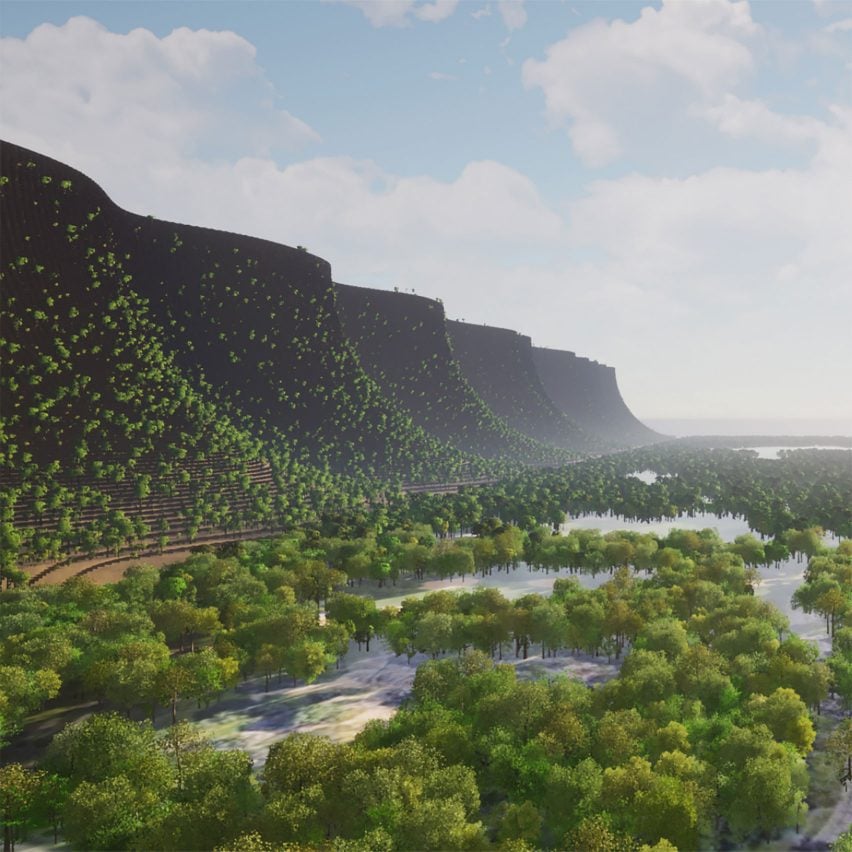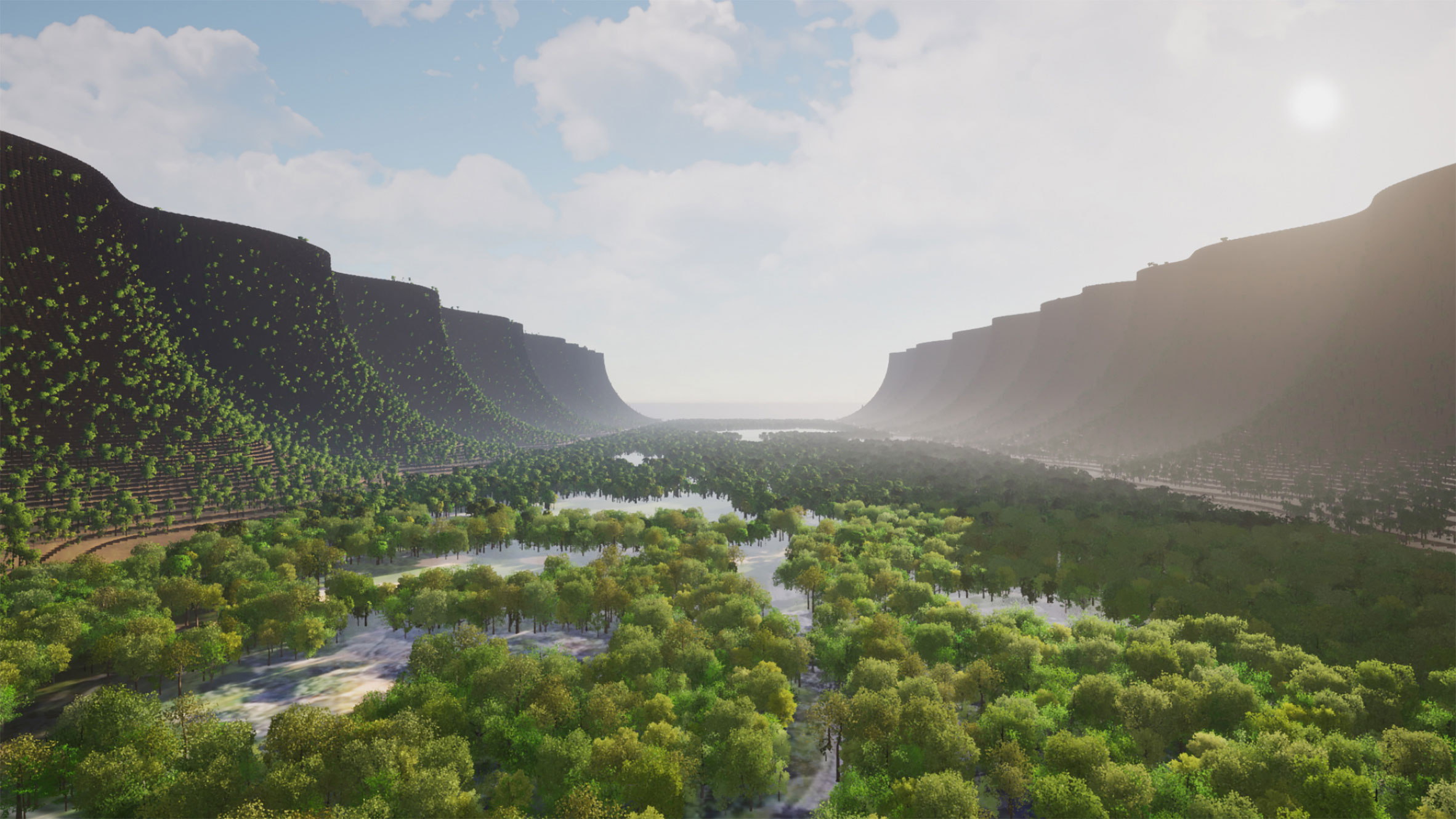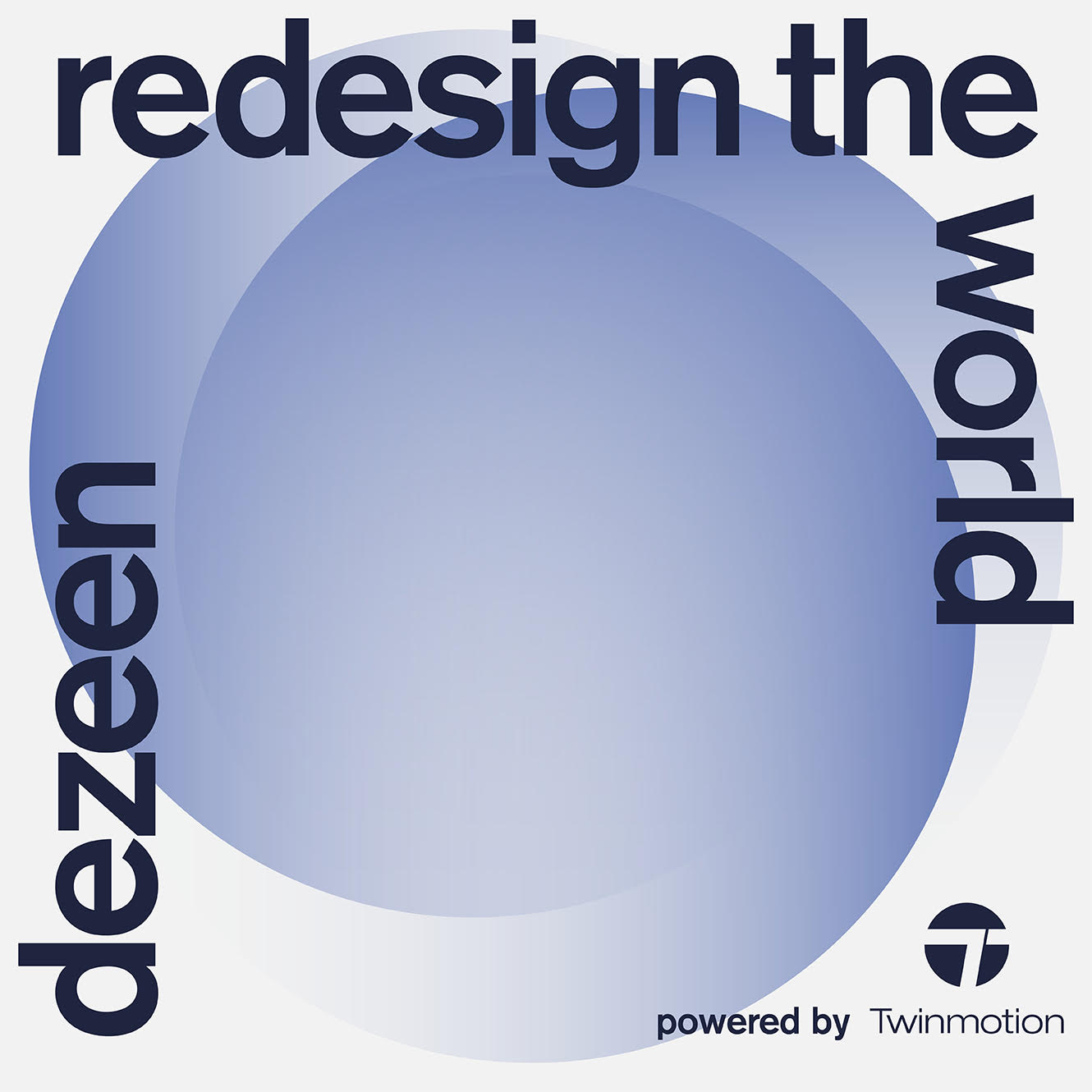
Fernando Donis' proposal to create new habitable topographies in which humanity and nature coexist has won first place in Dezeen's Redesign the World competition powered by Twinmotion.
Donis' Frame City concept aims to undo the damage to nature and people's wellbeing caused by a century of rapid urbanisation.
Each high-density city, which is designed to house a million people, is formed of mountain-like terraced structures made from cross-laminated timber, which would be built to frame natural landscapes.
Roads and private vehicles would be abandoned in favour of pedestrian and cycling infrastructure and careful city planning to ensure that necessary services and amenities are within a 15-minute walk or cycle of people's homes.
Donis imagines that each city would be designed to integrate with and complement its natural surroundings, creating a diverse network of different urban settlements, which would lead to rich cultural exchanges and tourism.
Frame City "unlike any other entry" in Redesign the World contest
The proposal beat over 100 entries and 14 other finalists to win the Redesign the World competition, which called for radical proposals to rethink planet Earth.
"Donis' proposal for a new topography that is inhabitable for people while providing for nature is powerful, compelling and unlike any other entry we received," said the Redesign the World judges.
"There have been many attempts to bring more greenery to our cities to fuse nature and architecture, but Frame City approaches the challenge in a really innovative and memorable way."
See all 15 finalists projects here or read on to find out more about Donis' Frame City proposal.

Frame City
Fernando Donis
Rotterdam, Netherlands
Winner
"In 1922, Le Corbusier proposed a city of three million inhabitants.
"Despite not being built, his vision defined urban principles for the past century:
– a business and commercial hub with high-rises surrounded by the sprawl of low-density housing;
– separation of urban programmes within a rational organisation;
– large highways for car circulation with less importance given to pedestrian network;
– unsustainable steel and concrete construction generating 'concrete jungles';
– endless urbanisation.
"These tenets engendered the urbanism we live in, making us prisoners of an endless capitalist consumption of cars, energy, time and landscape.
"Today, despite new attempts of integrating solar energy, EV mobility and underground infrastructure, the core of the problem still comes from the cities we envisioned a century ago.
"Redesigning the world means radically rethinking the economic, political and environmental model of the city: a bottom-up agenda from the city to the entire planet, reinventing new sustainable standards that adapt to the population and climate change needs of the 21st Century.
"For 2022, we propose the Frame City, a compact, one-million-inhabitant 'Countrycity', a combination of city and countryside, with the following agenda:
– the integration of housing, business and commercial programmes within densified structures;
– the combination of urban programmes within organic compositions, surrounding large green parks or forests;
– the elimination of the highway and the use of private vehicles in exchange for pedestrian and cycling networks;
– sustainable cross-laminated timber (CLT) construction, generating 'green cities';
– framed densified cities.
"The best places to live in the world are right in from of the best parks: Central Park in New York, Hyde Park in London, Chapultepec Forest in Mexico City, Kralingse Bos in Rotterdam, etc.
"Such places find a balance between city and countryside, engendering a 15-minute healthy polis, ideal for walking and cycling. The new cities can become that, simple frames surrounding distinct natural landscapes with every human being living at the most valuable parts of the city.
"A combination of high-rise and megastructure, large curvilinear 'mountains' with terraces integrate a quarter of a million living units with four inhabitants average per unit.
"Services, commercial and business areas form the triangular structural base of the mega waves with views towards the open fields.
"Every city would vary according to the park, forest or landscape they frame, potentially creating thousands of singular experiences that would forge tourism and cultural exchange.
"The rest of the environment should be reclaimed by nature, protecting our planet ecosystems and the human race for millions of years.
"Architecture becomes an extension of nature at the Frame City, undoing thousands of years of mistaken so-called progress. The city architects would now cooperate to design and maintain each city, rather than competing for extravagant uniqueness.
"They would also plan the agricultural and solar fields encircling and stopping the cities for further development; regions providing the necessary food and energy for each Frame City.
"As in an ancient Greek society, the diverse communities of the multiple frames would refocus their concerns towards philosophy, science, knowledge and sports."
Redesign the World
Redesign the World is the ultimate design competition, which called for new ideas to rethink planet Earth to ensure that it remains habitable long into the future.
Launched in partnership with Epic Games, the contest asked entrants to visualise their concepts using architectural visualisation software Twinmotion.
The contest received over 100 entries from more than 30 different countries around the world.
These were assessed by a judging panel comprising White Arkitekter CEO Alexandra Hagen, structural engineer Hanif Kara, speculative architect Liam Young, Twinmotion product marketing manager Belinda Ercan and Dezeen founder and editor-in-chief Marcus Fairs, which selected 15 proposals as finalists to be published on Dezeen.
We unveiled one finalist a day throughout our Dezeen 15 festival. The winner received a top prize of £5,000. There were also prizes of £2,500 for second place, £1,000 for third place and £500 each for the remaining finalists.
Find out more about Redesign the World ›
See all the finalists ›
The post Fernando Donis' Frame City proposal to "combine city and countryside" wins Redesign the World contest appeared first on Dezeen.


No comments:
Post a Comment